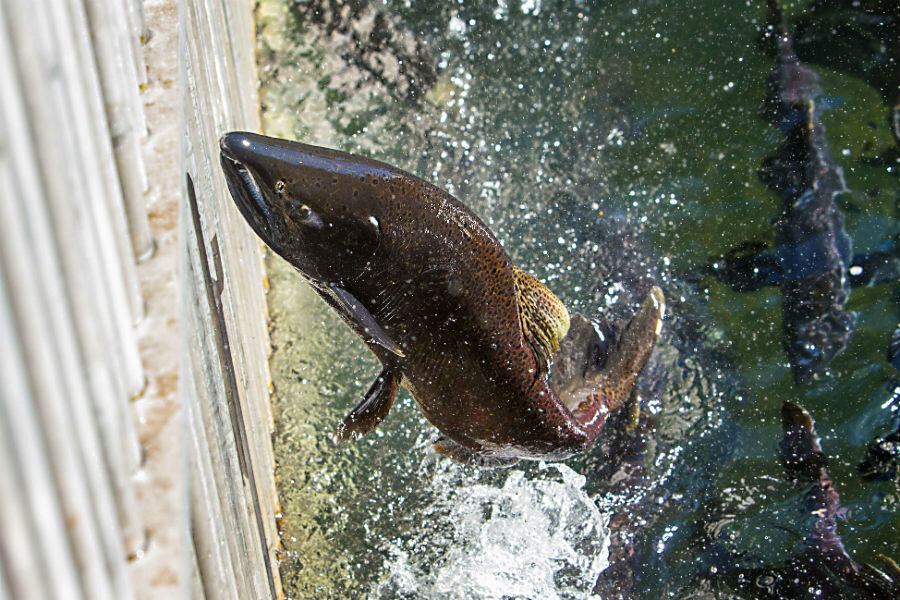How different are wild salmon from farm salmon? A lot, DNA shows.
Loading...
Within just one generation, hatchery-born salmon can become drastically different from their counterparts in the wild, with hundreds of variations at the genetic level.
Looking specifically at the steelhead trout salmon, researchers at Oregon State University, in collaboration with the Oregon Department of Fisheries and Wildlife, found more than 700 genetic variations between farm-raised and wild salmon.
The differences have long been theorized to exist. The survival and reproduction gaps between the two fish point to the rapid adaptation of hatchery fish to their confined environments. When fish born in hatcheries are released to the wild, for instance, they have a far harder time reproducing than compared to their indigenous cousins.
“We observed that a large number of genes were involved in pathways related to wound healing, immunity, and metabolism, and this is consistent with the idea that the earliest stages of domestication may involve adapting to highly crowded conditions,” Mark Christie, lead author of the study, said in a statement.
But now with DNA evidence in the study published Wednesday in Nature Communications, the case is closed. After comparing the offspring of first-generation salmon raised in a hatchery with those in the wild, the scientists counted 736 genetic differences.
“This pretty much settles the question of whether hatchery fish can be genetically different after just a single generation of domestication,” Michael Blouin, an author of the study, told Newsweek. “What is important is that this work is a step towards trying to figure out which traits are under strong selection in the hatchery, and what hatchery conditions exacerbate that selection.”
“A fish hatchery is a very artificial environment that causes strong natural selection pressures,” he explained in a statement.
In artificial fish farms, salmon are packed gill-to-gill. Often contained only by open nets, these environments can be a breeding ground for disease and contamination, say researchers.
As some conservationists worry that these conditions could spread disease to the already depleted wildlife population of salmon, this latest study offers some insight on how to improve hatcheries so the fish they produce are more similar to their cousins in nature and ultimately recover the number of salmon in the wild.
“Once we understand what traits of the fish are being favored in hatcheries, it may be possible to change the way hatchery fish are raised to reduce the selection pressures on them,” Dr. Blouin said.








